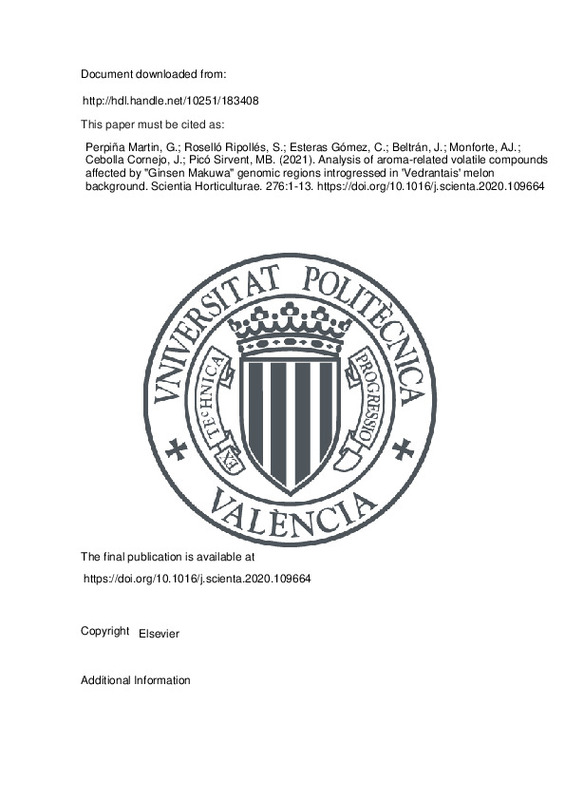JavaScript is disabled for your browser. Some features of this site may not work without it.
Buscar en RiuNet
Listar
Mi cuenta
Estadísticas
Ayuda RiuNet
Admin. UPV
Analysis of aroma-related volatile compounds affected by "Ginsen Makuwa" genomic regions introgressed in 'Vedrantais' melon background
Mostrar el registro completo del ítem
Perpiña Martin, G.; Roselló Ripollés, S.; Esteras Gómez, C.; Beltrán, J.; Monforte, AJ.; Cebolla Cornejo, J.; Picó Sirvent, MB. (2021). Analysis of aroma-related volatile compounds affected by "Ginsen Makuwa" genomic regions introgressed in 'Vedrantais' melon background. Scientia Horticulturae. 276:1-13. https://doi.org/10.1016/j.scienta.2020.109664
Por favor, use este identificador para citar o enlazar este ítem: http://hdl.handle.net/10251/183408
Ficheros en el ítem
Metadatos del ítem
| Título: | Analysis of aroma-related volatile compounds affected by "Ginsen Makuwa" genomic regions introgressed in 'Vedrantais' melon background | |
| Autor: | Roselló Ripollés, Salvador Beltrán, Joaquim Monforte, A. J. | |
| Entidad UPV: |
|
|
| Fecha difusión: |
|
|
| Resumen: |
[EN] Volatile profile of melon fruit from 25 introgression lines (ILs), developed by introgressing specific genomic regions from the Japanese cultivar `Ginsen makuwa¿ (MAK) into the `Charentais¿ recurrent genetic background ...[+]
|
|
| Palabras clave: |
|
|
| Derechos de uso: | Reconocimiento - No comercial - Sin obra derivada (by-nc-nd) | |
| Fuente: |
|
|
| DOI: |
|
|
| Editorial: |
|
|
| Versión del editor: | https://doi.org/10.1016/j.scienta.2020.109664 | |
| Código del Proyecto: |
|
|
| Agradecimientos: |
This work was supported by Plant KBBE project (SAFQIM: MINECO/PIM2010PKB-00691), by the Spanish Ministerio de Ciencia, Innovación y Universidades (grants AGL2017-85563-C2-1-R and RTI2018-097665-B-C22) (jointly funded by ...[+]
|
|
| Tipo: |
|







![[Cerrado]](/themes/UPV/images/candado.png)


